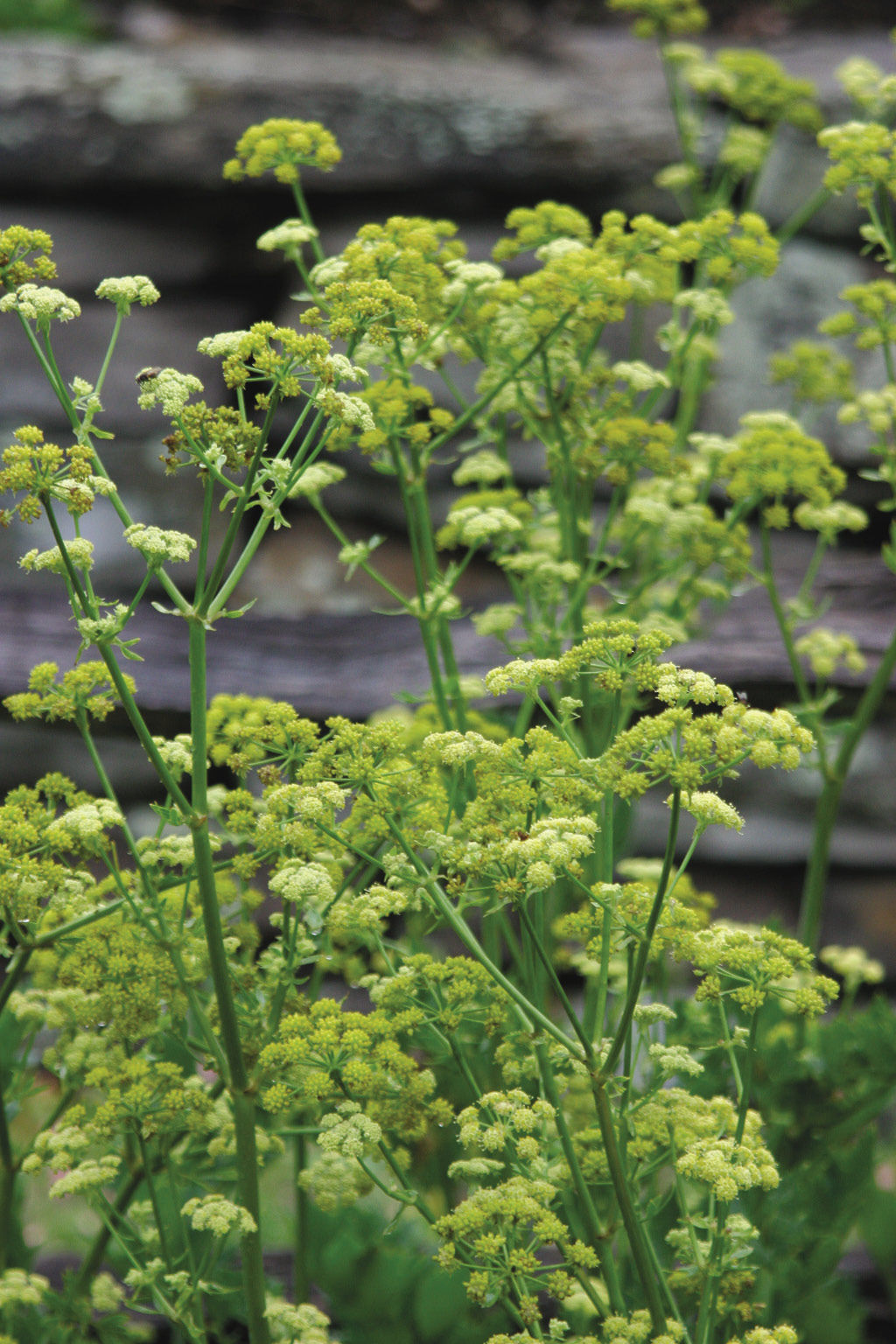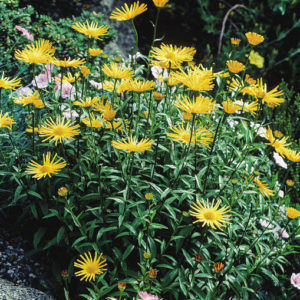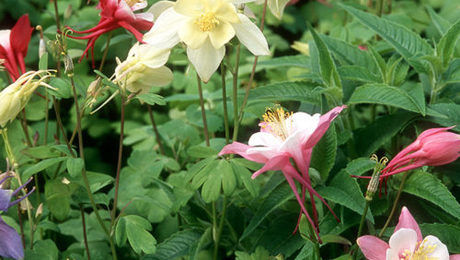
1. Lovage
Name: Levisticum officinale
USDA Hardiness Zones: 4 to 8
Size: 3 to 6 feet tall and 2 to 3 feet wide
Conditions: Full sun to partial shade; average soil
Here’s a multipurpose perennial with stature. Lovage is a member of the carrot family, and its tripinnate leaves, large chartreuse flower umbels, and all other parts of the plant are edible. I grind the leaves into a slurry and use them in fall soups. The stems can be candied as a sweet treat with out-of-this-world flavor, and the seeds can be used as a topping for breads or savory muffins. Stratify seeds by chilling them during winter and expect spring seedlings with no fuss.
2. Persian stone cress

Name: Aethionema grandiflorum
Zones: 5 to 7
Size: 7 to 14 inches tall and wide
Conditions: Full sun; well-drained soil
This xeriscape perennial demands to be noticed. It resembles rosemary with its linear leaf shape, but that’s where the plants part company. The low-growing shape and relaxed habit of Persian stone cress make it easy to grow in tight, sunny, rocky pathways. If you can stand to shear off the diminutive chartreuse seedpods, you can gain another burst of blossoms in late summer, when few plants are flowering. Persian stone cress is a common sight on the Turkish hillsides, but it is comfortable and lives longer in New England. I have had great success stratifying and sowing seeds in winter and transplanting the seedlings in spring.
3. Narrow-leaved inula

Name: Inula ensifolia
Zones: 4 to 9
size: 1 to 2 feet tall and 1 foot wide
Conditions: Full sun; moist, well-drained soil
This little stunner with lots of foliage pizzazz is perfect for a cutting- or rock-garden border. The midsummer perennial has bright yellow-rayed flowers that are perfect for pollinators and onlookers alike. And what a combination to have the leaf and flower similarly shaped. Narrow-leaved inula is happy almost anywhere as long as it receives lots of sun. Unlike other species in the genus, it does not reseed in my garden and keeps its well-kept habit and shape. Sow seeds indoors in spring at 70°F for germination in about two weeks, then bring seedlings outdoors when the ground is workable.
4. Small’s beardtongue

Name: Penstemon smallii
Zones: 5 to 9
Size: 12 to 22 inches tall and wide
Conditions: Full sun to partial shade; fertile, well-drained soil
I have enjoyed studying and photographing the seed of this marvelous genus for many years and have also grown dozens of plants from seed. With close to 300 species, Penstemon is one of the largest endemic genera of herbaceous plants in the United States. The tubular, dusty lavender flowers of Small’s beardtongue strike a lovely pose as a front-of-border plant. Seeds sown in a soilless mix heated to 70°F will germinate in two to three weeks, and the plants will flower the first season. This beardtongue is happiest in sun, although it will tolerate partial shade. A truly wonderful native American wildflower, this plant has a place in every early-summer garden.
Julie McIntosh Shapiro is a seed photographer and curatorial assistant at the Harvard University Herbaria in Cambridge, Massachusetts.
Photos: Michelle Gervais, Julie McIntosh Shapiro, Jerry Pavia, Bill Johnson, courtesy of Julie McIntosh Shapiro
Fine Gardening Recommended Products

A.M. Leonard Deluxe Soil Knife & Leather Sheath Combo
Fine Gardening receives a commission for items purchased through links on this site, including Amazon Associates and other affiliate advertising programs.


















Comments
Log in or create an account to post a comment.
Sign up Log in